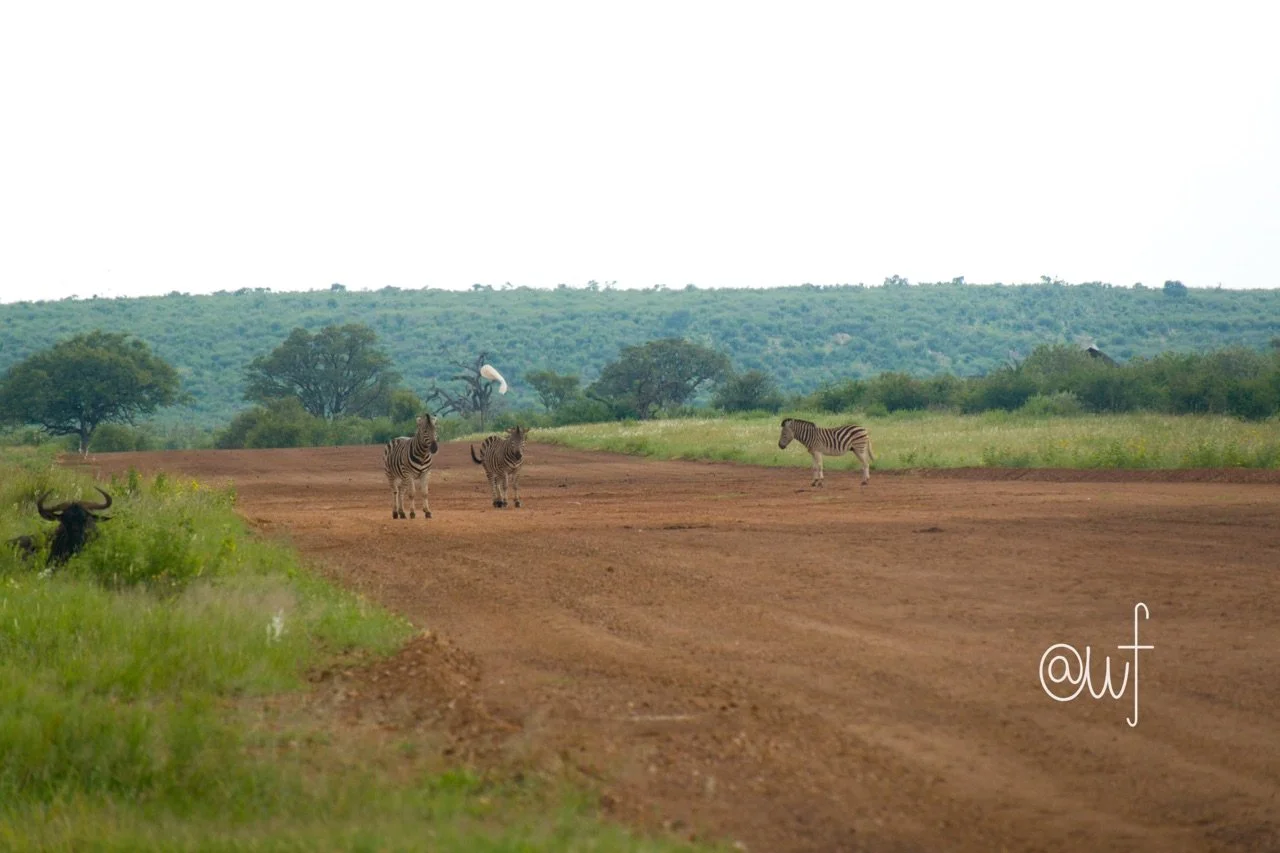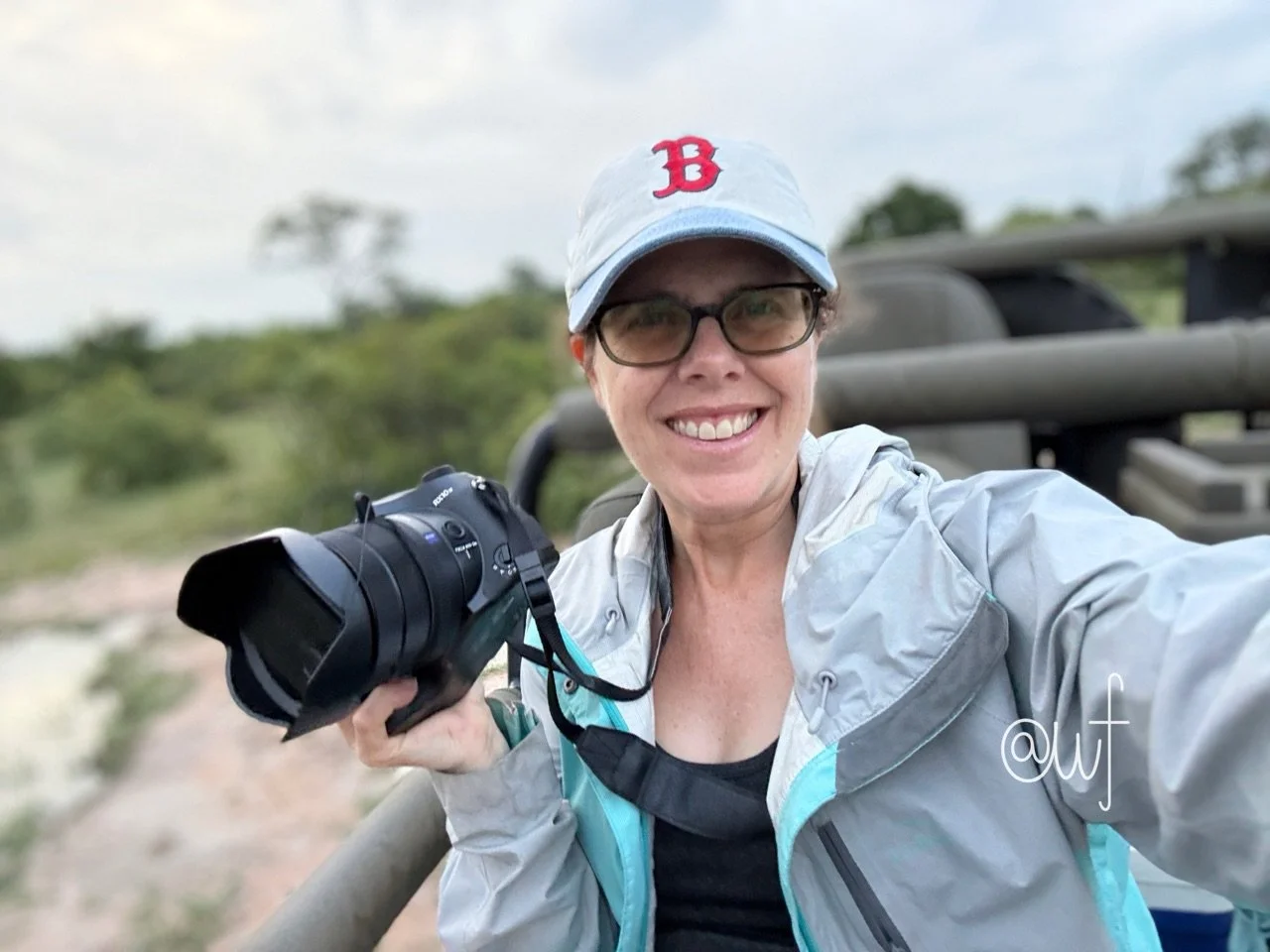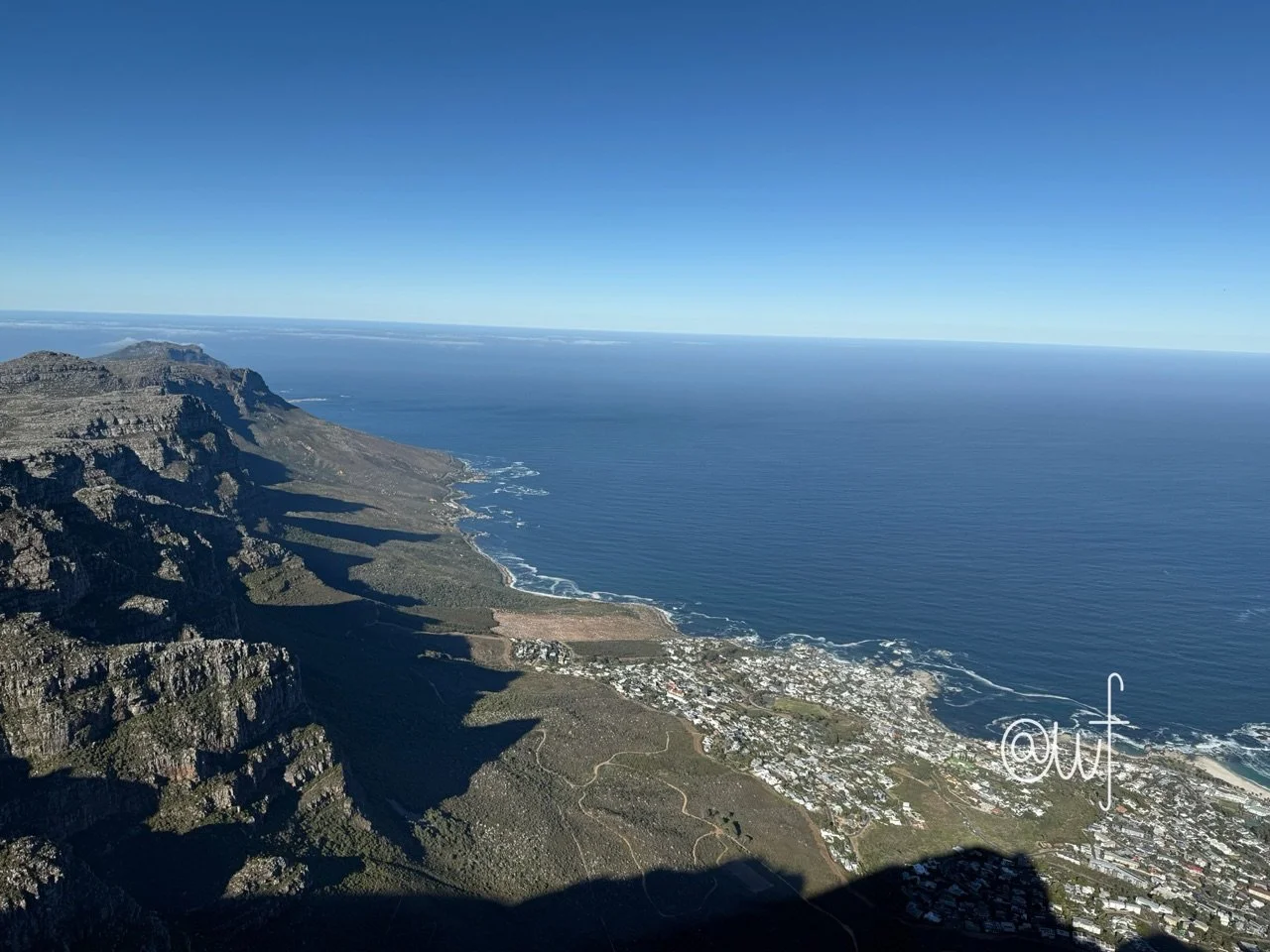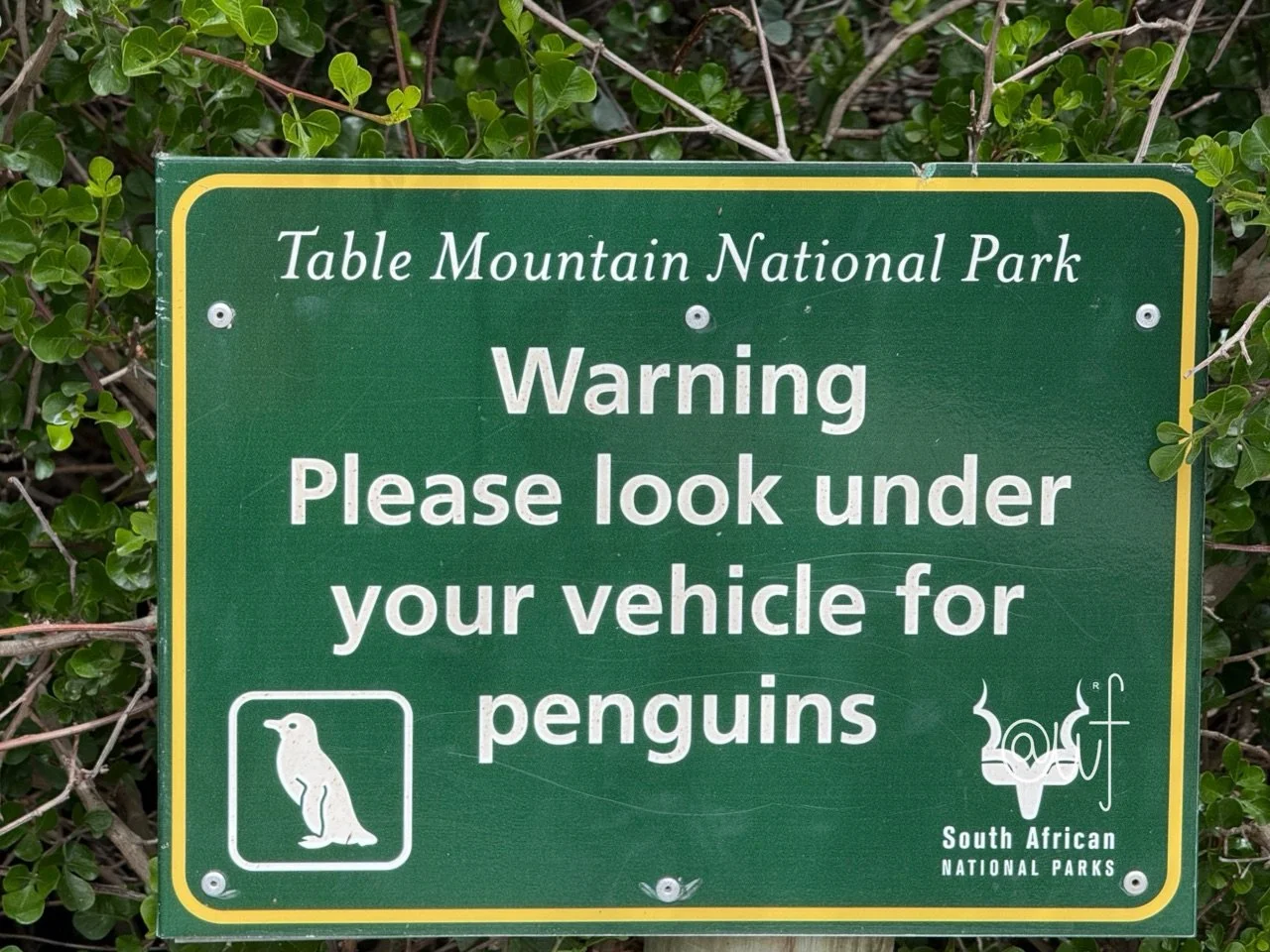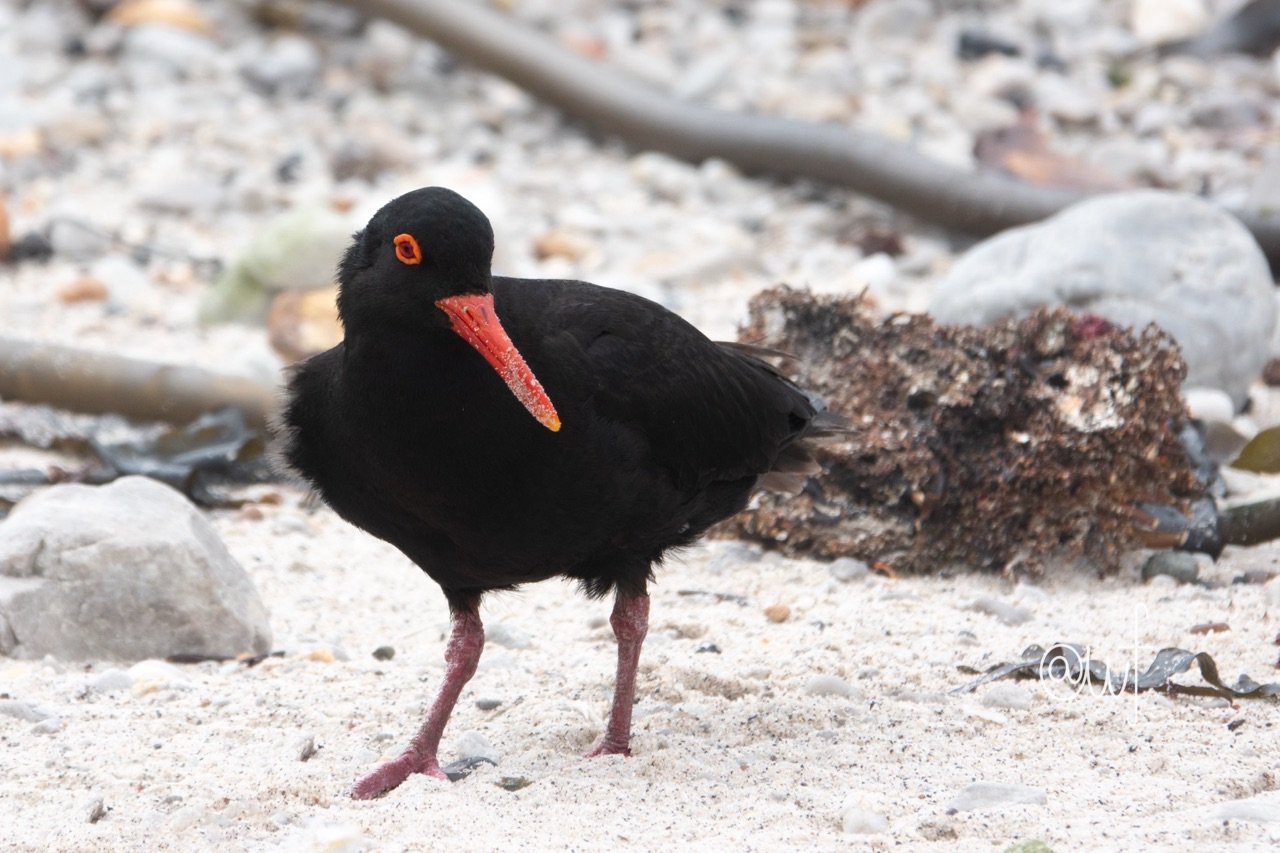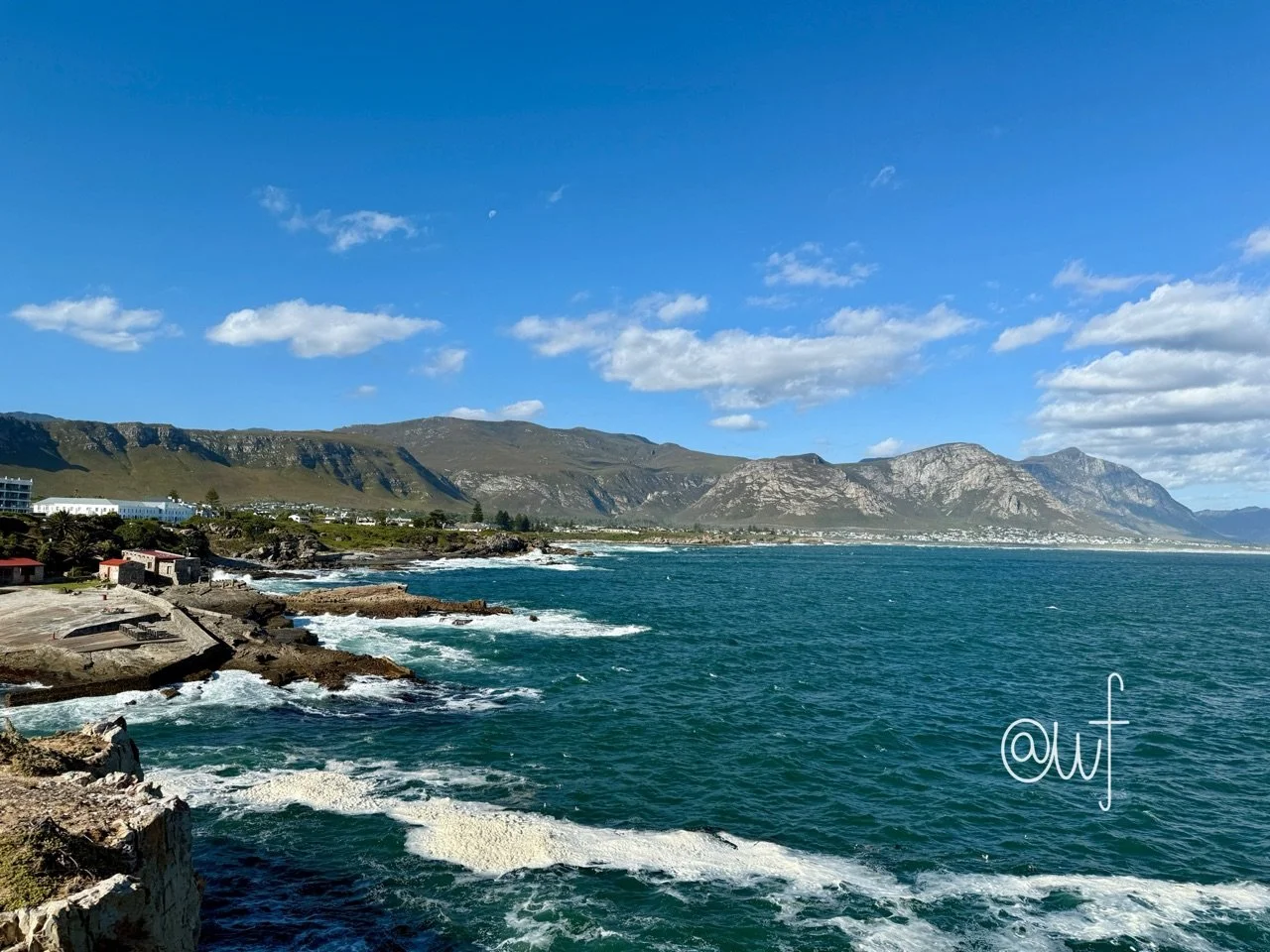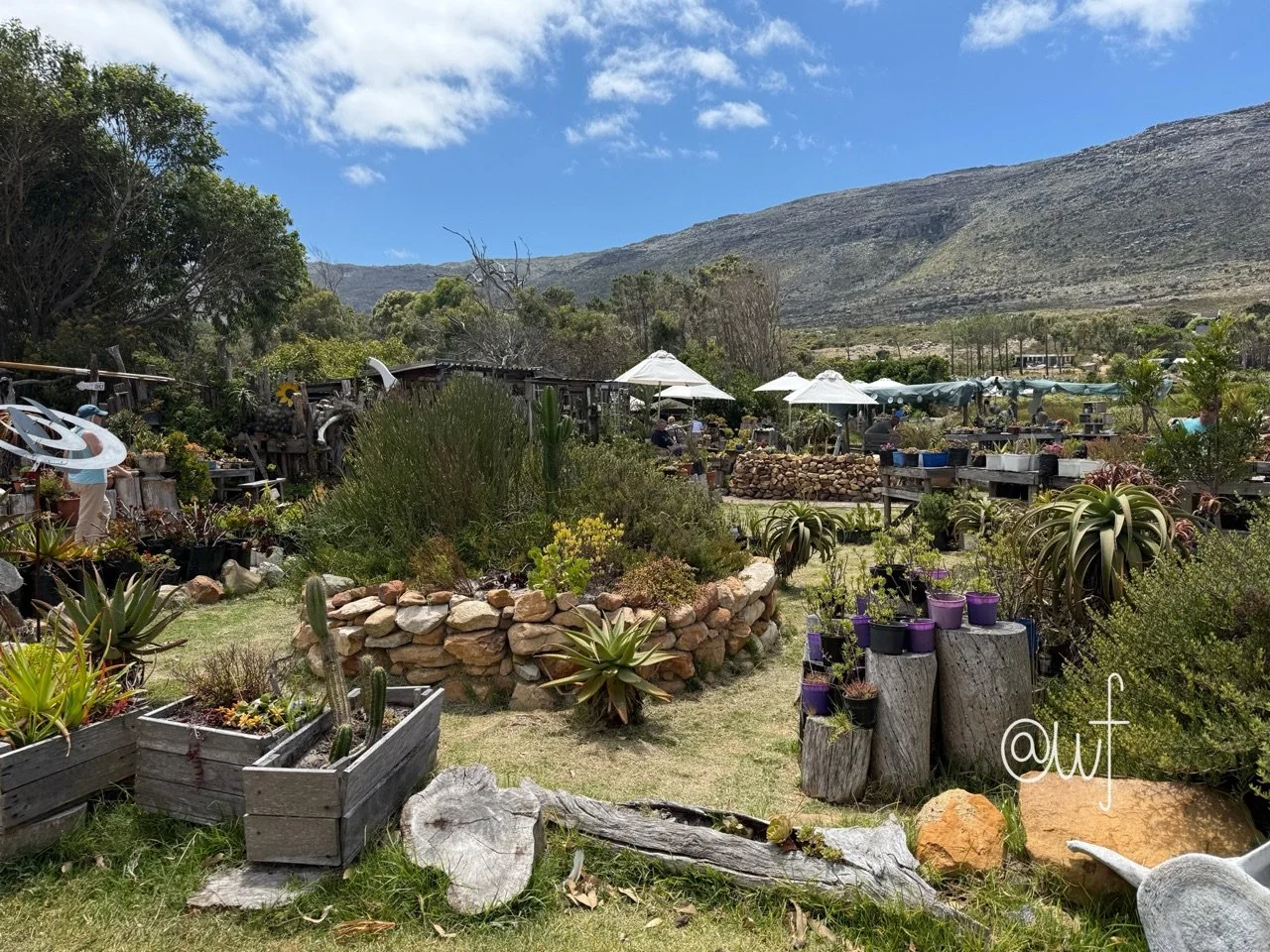Two Weeks in South Africa and Photo Tips
If you have followed me at all, you know that travel is one of my passions. Being a new empty nester I thought we would have all sorts of time to travel - that turned out not to be the case as the kids still manage to dictate my schedule. But February is a quiet month for college weekends and breaks, so we took advantage and spent two+ weeks in South Africa, almost three if you include the travel there and back. It was amazing! I have posted a bit about our trip on my social media accounts, but have been asked by many for a full recap, so here we go. Honestly, this post is probably more for me than for you, and is way too long, but I hope you enjoy it!
Our Itinerary
We packed a lot in our time there - I’m not one to sit around much 😁.
Day 1: Johannesburg cultural tour and the Owl Rescue Center in Haartbeespoort
Days 2-9: Cape Town, Cape Point, Hermanus, and Cape Agulhas
Days 10-13: Madikwe Game Reserve
Days 14-15: Timbavati Nature Reserve
Days 16-17: Sabi Sands Game Reserve
Day 18: Cradle of Humankind & flight home
Planning and Logistics
South Africa is not easy to get to from Chicago - so you really need at least 2 weeks for a trip like this from the United States. The flights alone took 4 days - we flew from Chicago to New York, then took a 14+ hour flight from New York to Johannesburg (closer to 17 for the flight home). We chose South Africa in part because we have good friends that live in Cape Town, and because we have been to Africa before and absolutely love it. I had been told before my first trip to Namibia that visiting Africa would be life changing, and it is true - there is something about the wildness of the nature there that touches your soul. We went as a family to Uganda a few years ago (see my photo book) and knew that we would go back.
South Africa is a big country, and there is no way to see it all in a couple of weeks. And there is no single “best” weather season - in February the weather in Cape Town is perfect, but that is rainy season in the areas where we wanted to go on safari. In fact “the internet” told us that February was one of the worst times for safari in South Africa because 1) it’s rainy season, and 2) there is so much water that the animals are harder to find in the tall summer grasses and they don’t need to gather at water holes. But that was the only time of year where we had enough time to take the trip, so we ignored all of that advice and went anyway. I’m so glad we did!
Visiting Cape Town was a given, and our best flights were in and out of Johannesburg, so that part of the trip was quite easy to plan. Choosing where and how to go on safari was much harder. We even looked at adding Victoria Falls and part of Tanzania, but decided to stay just in South Africa.
I did a ton of research via books from the library, our friends that live there, social media, and of course the internet. I love finding the out of the way places and unusual experiences. One of these was dinner at the Owl Rescue Center outside of Haartbeespoort, a few hours from Johannesburg. Honestly, I wasn’t even sure it was real as I found it via Facebook and no one I asked had ever heard of it, but we took a chance and I’m so glad we did - more on this below.
Most people who go to South Africa for safari visit Kruger National Park. Kruger is huge, and has just about everything you might ever want to see in Africa. Kruger allows for you to self-drive without a guide. At first that sounded fun, but after digging in a bit more we realized we did not want to do that. My husband would have had to do all of the driving - the combination of a stick shift car and driving on the left was not something I felt comfortable doing, although I could in a pinch and have done it before. But more than that, if we were self-driving he would miss so much having to keep his eyes on the road. We also would not have the benefit of knowing where to look for the animals we want to see, or having a guide that can teach us about their behavior and habitat. Finally, and probably the biggest drawback for me, is that parts of Kruger can get very crowded and the photos I saw of tons of cars packed in to watch a lion was not appealing to me in the least.
One interesting thing about Kruger is that there are a lot of private reserves that abut the boundaries of the park, and there are no fences between them. These private reserves have different rules - no self driving, and only 2 or 3 cars can be at a siting at a time. You have to go with a guide, and these guides are incredibly knowledgable. It’s not just about finding the animals, they also know their behavior, their history, and all about how each different species fits into the ecosystem as a whole. This sounded a lot more attractive to me, so we chose 2 different areas - Timbavati and Sabi Sands, primarily because I couldn’t make up my mind between them. Most of the time we were alone with the animals, and I was free to ask all my questions :)
We also chose to visit an area away from Kruger that is much less well-known, at least to Americans, and that is the Madikwe Game Reserve along the Botswana border. We knew we would have a better chance of seeing cheetahs there, which was very high on my list. Spoiler alert, we were right! As a side note, there is no malaria in the Madikwe area, so if malaria is a concern for you, definitely put Madikwe on your list. We had to take malaria pills while in Kruger - I’ve taken them before and they don’t bother me, but for some people they can be problematic.
The Madikwe airstrip.
We had to drive the airstrip first to get the zebras to move before the plane could land to pick us up. And kept a close eye on the Cape Buffalo on the left.
Getting around from place to place required a few charter flights and a drives. We had someone local in South Africa help us with these - she arranged the flights and cars that took us from Johannesburg to Madikwe, from Madikwe to Timbavati, and from Timbavati to Sabi Sands. We could have done our own driving here, but renting cars for one way trips was expensive and not appealing. Nor were the roads in great shape, several make Chicago potholes look as smooth as glass. She also set up guides to take us to the Apartheid Museum and a cultural tour around Johannesburg, and an evolutionary historical tour through the Cradle of Humankind where we were able to see archaeological digs and other areas instrumental in understanding human pre-history.
Packing and Camera Equipment
The charter flights had very strict luggage restrictions, so we were carry-on only for this trip. That was fine for me, we are always carry-on only. But packing was a bit tricky because the temperature in Cape Town required some additional layers, and the potential rain on safari required extra shoes so that we always had a dry pair.
When I travel in general I often bring just my iPhone. I’ve found it’s fine for people pictures and landscape, and it’s so convenient. But on this trip we were doing a lot of birding and of course animals!!! For those I brought my trusty Sony RX10 Mark iv. This is a bridge camera I initially bought in 2019 for Namibia, because I was tired of carrying around multiple lenses, and Africa can get quite dusty so you don’t want to be changing lenses while out and about. It has been my go-to ever since. It is not as good as a pro camera, but it is so much smaller, with a great zoom, and my photos are crystal clear. It is also fairly weather-proof which was very important when traveling during the rainy season. I love it! I also had with me my iPad with lots of storage space and an adapter so that I could transfer the photos from my camera to my iPad in the evening. That allowed me to both back them up and to review them when I had time (like the 24+ hours it took to get home!). See this post for more on my workflow.
My trusty Sony with it’s 24-600mm zoom (35mm equivalent).
A word on safety
Pretty much everyone has asked me, isn’t South Africa dangerous? The US state department lists it (as of February 2025) as level 2, exercise increased caution due to crime, civil unrest, and kidnapping. Everywhere we went had barbed wire, electric fences, and private guards. You do not go out alone at night. That said, I never felt unsafe. I live in a city now, and we followed the same precautions - don’t walk alone at night, no flashy jewelry, etc. - and did not have a problem. I only used my cell phone, not my camera, in the cities and kept it tucked away when not in use. That said, I did not wander into non-touristy areas like I would at home.
Johannesburg and the Owl Rescue Center
I really had no desire to visit Johannesburg, but as mentioned we had to fly there anyway, so we took advantage. I will say it was worth it to see the Apartheid Museum. Even for an American without great knowledge of this part of history it is 100% worth visiting this museum. We had a guide who also took us all around the area, including Soweto and other spots, and he was incredible fountain of knowledge. The poverty and economic disparity was sobering. If you go to Johannesburg, I highly recommend a guide - you will learn a whole lot more and go to places you shouldn’t go to alone. It was also nice doing this on day one so we had a good grounding in South African cultural history and politics as we travelled around the country.
We actually added a few days onto our trip just to go to the Owl Rescue Center. We had almost a total rainout but it was totally worth it (if you can’t tell, I am definitely a glass half full person)! It is a nonprofit that uses once a month dinners to raise money to feed the owls it rescues. When we arrived it was pouring and one of the biggest lightening storms I’ve ever seen. There’s nothing quite like standing in a tree house with a tin roof during a lightening storm. But we met some really nice people, had great food, and did see some owls. It was a truly unique experience.
Cape Town
When we were planning the trip, I thought a full week in Cape Town would be too much. We originally planned for half a week, but when we added on the Owl Rescue Center we had some extra days. I was completely wrong. Not only did we easily fill the week, but we could have used more time there. It certainly helped that we were staying with friends so did not have to pay for a hotel, and the quality time we had to catch up with them was a highlight of our trip.
Birding!
For one of our days we hired a local bird guide to take us to his favorite spots and introduce us to South African birds. It was fantastic! We took our time at Kirstenbosch Gardens, Rondevlei Nature Reserve, and the Strandofein Sewage Works, otherwise known as the water treatment plant… I had actually read about how amazing Strandofein was, but it was not a place we were comfortable going alone, particularly since we did not know the area. He also taught us about habitats unique to the area.
***
Photo tip: remember to change the time on your camera so that the photos will line up with those you take on your phone. If you are interesting in adding location data to your photos, remember to take a few with your phone so you can add that data to your camera pictures if your camera does not have gps. There are also apps you can use to create a gps file to add to your camera photos, but I have never bothered with this.
***
Cape Sugarbird, a species endemic to the Fynbos habitat in South Africa.
Black-winged Stilts at the water treatment plant.
Orange-breasted Sunbird. This species is also endemic to the Fynbos habitat in South Africa.
Table Mountain and Robben Island
View from the top of Table Mountain.
We had fabulous weather, so we took the cable car up Table Mountain, and spent a morning walking around the trails on the top. The cable car itself is a cool experience, it rotates 360° as it goes up and down the side of the mountain. We went up early - right when it opened - so for the first while we were the only ones up there. As the morning went on in came the crowds.
In the afternoon we wandered around the V & A waterfront then took the boat to Robben Island, home of the prison where Nelson Mandela was held for 18 years. The tour was fascinating because our guide had been imprisoned there himself, and more impactful as we had that private guide in Johannesburg, who took us to the Apartheid Museum and Mandela’s house. All the guides at Robben Island are former prisoners giving a truly unique tour. And bonus, there is an African penguin colony on the island!
Muizenberg Beach and Boulders Beach
We had a cloudy and windy day, perfect to visit Muizenberg Beach to see the big surf. Muizenberg is known for the surf and for the colorful huts along the beach. This area of the coast is also known for sharks, but we did not see any (I was ok with that, although it would have been cool to see a Great White!)
There is a nice walk along the water from Muizenberg to St. James. You do have to keep an eye on the surf, several times the waves came crashing over the path.
Muizenberg Beach
After some fine fish and chips at Kalky’s (not to be missed if you are in the area) we went to Boulders Beach to see the penguins. We had originally planned to do this with friends later in the week, but decided to go on our own as I knew we would want to spend more time there than literally anyone else, and I was right. We spent hours watching the penguins and exploring the area.
So many African Penguins behind us!
African Penguin giving us his best Instagram pose.
We checked!
We topped off the day with dinner at Groot Constantia Wine Farm, South Africa’s oldest producing wine farm. Earlier in the week we ate at Constantia Glen Wine Estate. Both were excellent and beautiful!
Stony Point Nature Reserve, Hermanus and Point Agulhas
We rented a car for two days to head out along the Western Cape. This has to be one of the most beautiful ocean drives I’ve taken, and an easy drive from Cape Town. We were out of season, but it is also one of the best places in the world to whale watch from land.
Stony Point Nature Reserve was a must stop for us because it has a nice African Penguin colony, and is a big breading ground for four different species of cormorants. It is one of the few places in the world where you can see four different species of cormorants together.
I could watch penguins all day.
Nesting White-breasted Cormorants.
African Oystercatcher.
***
Photo tip: when you have varying conditions, remember to check your settings! I shoot on manual, and don’t always remember to double check the shutter and aperture which is problematic when going from bright sun to cloudy.
***
We also stopped at Harold Porter Botanical Gardens for more birding :).
Hermanus has a lovely cliff walk which we did the following morning. If I lived there I think this would be my regular running route. After refueling at a beach cafe at the end of the hike, we took the car and headed out to Point Agulhas.
Hermanus.
Point Agulhas is the southern-most point of Africa. We were told there’s not much there and it wouldn’t be worth visiting, but we have a weird fascination with visiting these types of spots. We actually really enjoyed both the ride and the point - it’s where the Indian Ocean and the Atlantic Ocean meet. You can actually see where the waves split and go in different directions.
On the drive back to Cape Town we saw lots of Blue Cranes, the official bird of South Africa. That might have been another reason I wanted to drive out this way…
Cape Agulhas. You can actually see where the oceans meet and the waves go to shore in different directions.
Blue Cranes, the national bird of South Africa. There aren’t too many places in the world to see them but along this drive is one of the best.
One of the benefits of staying with friends - they know of all of the fun events in the area - so we met them at the night market at the Boschendal wine farm on our way back to Cape Town. Live music, lots of amazing food, beautiful scenery, what more could we ask for?
Exploring Cape Point
Our friends took us on a personalized tour of Cape Point starting with Chapman’s Peak Drive, followed by breakfast at the Scone Shack. Warning, don’t visit the Scone Shack if you don’t like farm animals, because the delicious scones come with a side of duck duck goose.
The Scone Shack.
Enjoying a scone with friends.
We had a gorgeous day driving around the peninsula. We had to do the obligatory photo stops at both Cape Point and the Cape of Good Hope (the south-western most point of Africa). We saw ostrich, baboons, Cape Fur Seals, Bonte Bok and lots of cormorants all of which made me happy :)
Required photo #1.
Required photo #2.
***
Video tip: If you like to watch videos on your tv, take them landscape and not portrait as your computer and tv screens are landscape. This video was taken by our friend - I’m so glad she captured this moment as the ostrich was on her side of the car, but the grey bars drive me nuts! To be fair, the ostrich was so big and so close it would have been impossible to capture this moment in landscape mode, but it makes my point :)
Photo tip: clean your lens! This goes for your phone and any additional cameras you have with you. Also ask your friends to do the same before they take photos of you.
***
We rounded out our time in Cape Town with a Matthew Mole concert at Kirstenbosch Gardens. Sitting in the shadow of Table Mountain it was a fantastic spot for a concert and a great way to end our time there.
Madikwe
After Cape Town we took an early flight to Lanseria, then drove to Madikwe Game Reserve, where we stayed for three nights. All I can say is wow! From our first game drive that afternoon to the last, we saw so many incredible animals, starting with a family of Cheetahs the day we arrived!
Game drives were early in the morning and late afternoon. In the middle of the day our lodge, Last Word Madikwe, had a waterhole complete with an underground bird hide where we could see the animals coming and going all day long. We were told that in the winter, when there is less water, the waterhole is packed with animals. In the summer, because water is fairly easy to find elsewhere, there were not as many, but we still saw elephants, wildebeest, rhinoceros, warthog, zebra, impala, Cape Buffalo and more all without leaving the lodge. And, because it was summer, it was green everywhere and we were driving through fields of wild hibiscus. So beautiful.
Every game drive brought us something new. Two month-old and four month-old lions along with mom and dad, giraffe, zebra, various antelope, hyenas, black-backed jackals, wildebeest, elephants. The only animal we could not find in Madikwe was a leopard. We capped off our stay on the last morning with African Wild Dogs! We had tried to find them the day before to no avail. I told our guide that I would forgo breakfast the next morning if it meant seeing the dogs, and luckily we were able to find them! It did mean that we had to race back to the lodge to get to our plane, but so worth it.
***
Photo tip: bring extra SD cards and batteries for your camera in case one fails. For your phone, double check your storage before you leave home - both your cloud storage and the storage on your phone itself. If you are in an area with bad or no internet, you must have enough storage on your phone itself to hold the photos until they can upload and leave the optimized on your phone. AND confirm that your photos and videos are actually uploading. We had so little internet that I had hundreds of photos on my phone that did not upload to the cloud until our last day. Just because you can send or receive a text does not mean the internet is strong enough to upload photos and videos.
***
Our guide in Madikwe was also great with bird identification. Generally we stopped for birds on the way back to the lodge as it’s hard to stop the car for a small bird in a tree when there are baby lions to be seen.
This Cheetah is roughly 6 months old. The lion cubs below were about 4 months old.
African Wild Dogs!
Timbavati
From Madikwe we took a charter plane to Timbavati, a private reserve that abuts Kruger National Park. This is where the rain caught up with us - on our second morning it was pouring. We went out anyway, but didn’t see a whole lot and were drenched. Given that we were in the area in rainy season, though, we totally lucked out. We did not miss a single safari, and only one was a true rainout where we didn’t see much.
At Timbavati we added leopards and crocodiles to our list. We also had great looks at more lions, elephants, hyenas, giraffes, Vervet Monkeys, Nyala, and other antelope.
Dinner at on our last night here was a barbeque out in the bush.
Sabi Sands
Our last few nights were at Sabi Sands, another private reserve next to Kruger and a few hours drive south of Timbavati. This was truly a leopard haven - we saw so many! On our second day in Sabi Sands we were caught in a lion traffic jam - we weren’t even looking for them as we had seen so many lions the day before - but we were stuck on the road with part of the pride behind us and part in front. While we were happy to sit, it was early in the day and there were some staff that had to call in late to their lodge as they could not get through. Somehow I don’t think my boss, back when I had one, would accept that excuse…
What was she looking at … ?
King yoga.
Lion traffic jam. There were several more behind us.
Crested Barbet.
There are so many leopards in this area.
Cradle of Humankind
On our last day we took a tour of the Cradle of Humankind, an area an hour or so from Johannesburg. We had a bit of an in here as we both have degrees in Anthropology and connections to people working in this area who gave us expert guidance on where to go, who to see, and who to talk to. Unfortunately the big cave was closed - that’s why most people go to this area - but it was still an interesting day. We stopped at several working archaeological sites, including one run by National Geographic, the Malapa Site, and the Malapa Museum at the Cradle Boutique hotel, which is definitely worth a stop. It was the perfect way to end our trip before getting on our 17 hour overnight flight home.
Behind the scenes at the National Geographic site.
Malapa Archaeological site. The fanciest dig site you’ll ever see.
Malapa Museum. Connections allowed us to have a long conversation with the woman working on this speciman.
How I Handled ALL the Photos…
Between the birding and other wildlife I took a LOT of photos. Thousands. For a more in-depth look at what I did with them, read this post. Also see Part I and Part II of my organizing photos while traveling series. The key was not to be overwhelmed by them. Each night I transferred the photos from my camera to my iPad, and when we had internet the photos from my phone also synced to my iPad. I could then sort through and find the keepers when I had a few minutes and on the long flights home. And, because I’m impatient, I would scroll through them right away and mark my favorites to send home to the kids when we had internet.
I also had a lot of videos. I filtered the media for videos, then looked at like videos together. For example, I had a lot of elephant videos as we saw them everywhere. It’s hard to choose favorites or delete when they are scattered, so I looked at all the elephant videos at once, chose my favorites and deleted the rest.
I did the same with photos, but I like to remember what I saw at each place so kept at least one or a few of every animal at every location.
We also kept a running list of everything we saw at every place - including extensive bird lists. These help me add the bird names to my keywords as I review my photos.
Congratulations for making it to the end of this post! Thank you for indulging me :)
Was this helpful? Should I have more travel posts? Let me know in the comments below!


